The Ford Falcon is a staple in the Australian automotive world that millions have experienced and loved. The BA Falcon which was released in 2002 was revolutionary at the time compared to the outgoing AU Falcon. It offered a modern drive and affordable transport for Aussies. Here we have a 2003 Ford Falcon Futura sedan which was the essentially the ‘safety pack’ version of the entry level XT Falcon. So is it a good used buy 19 years on? Let’s find out.
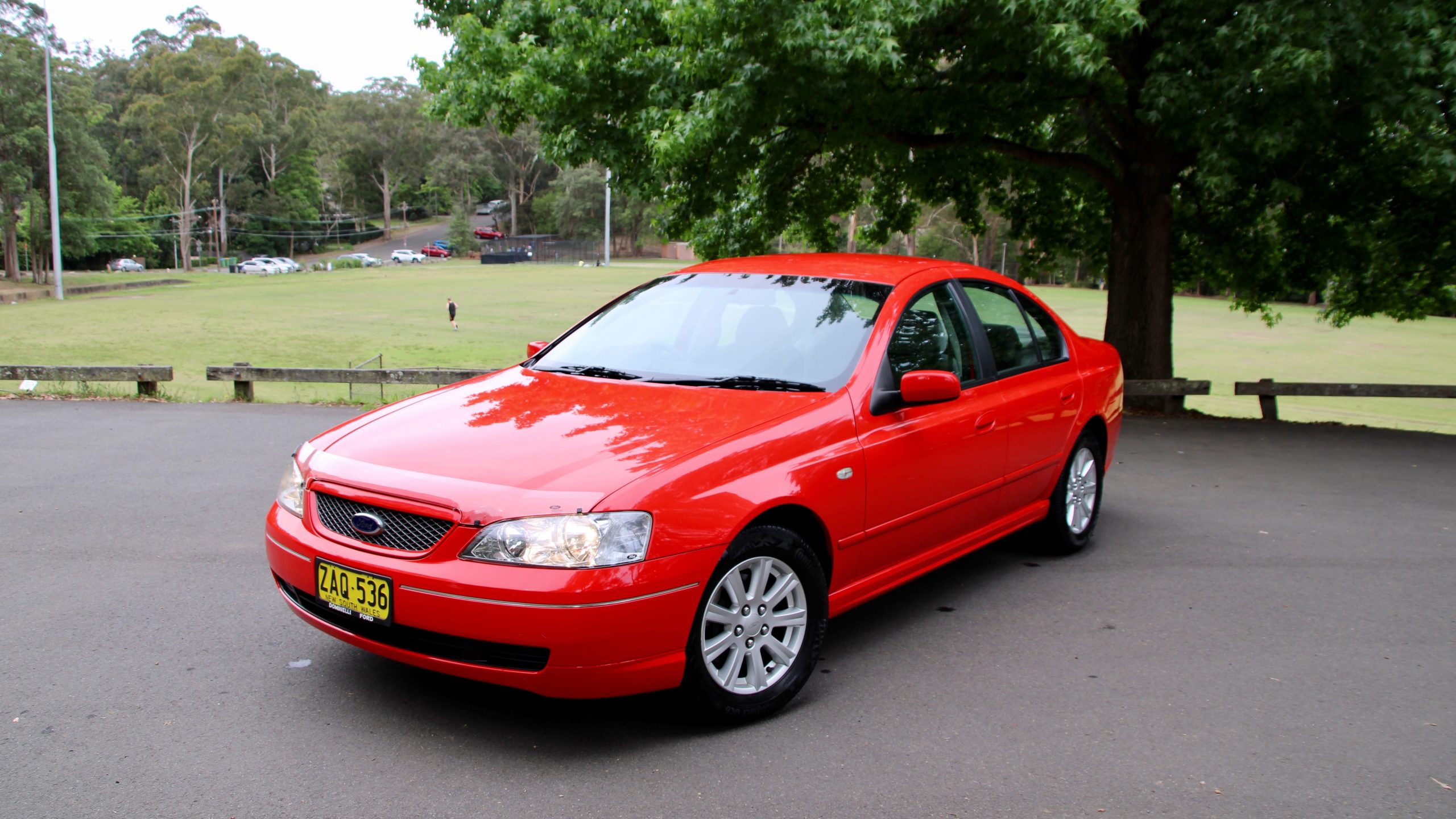

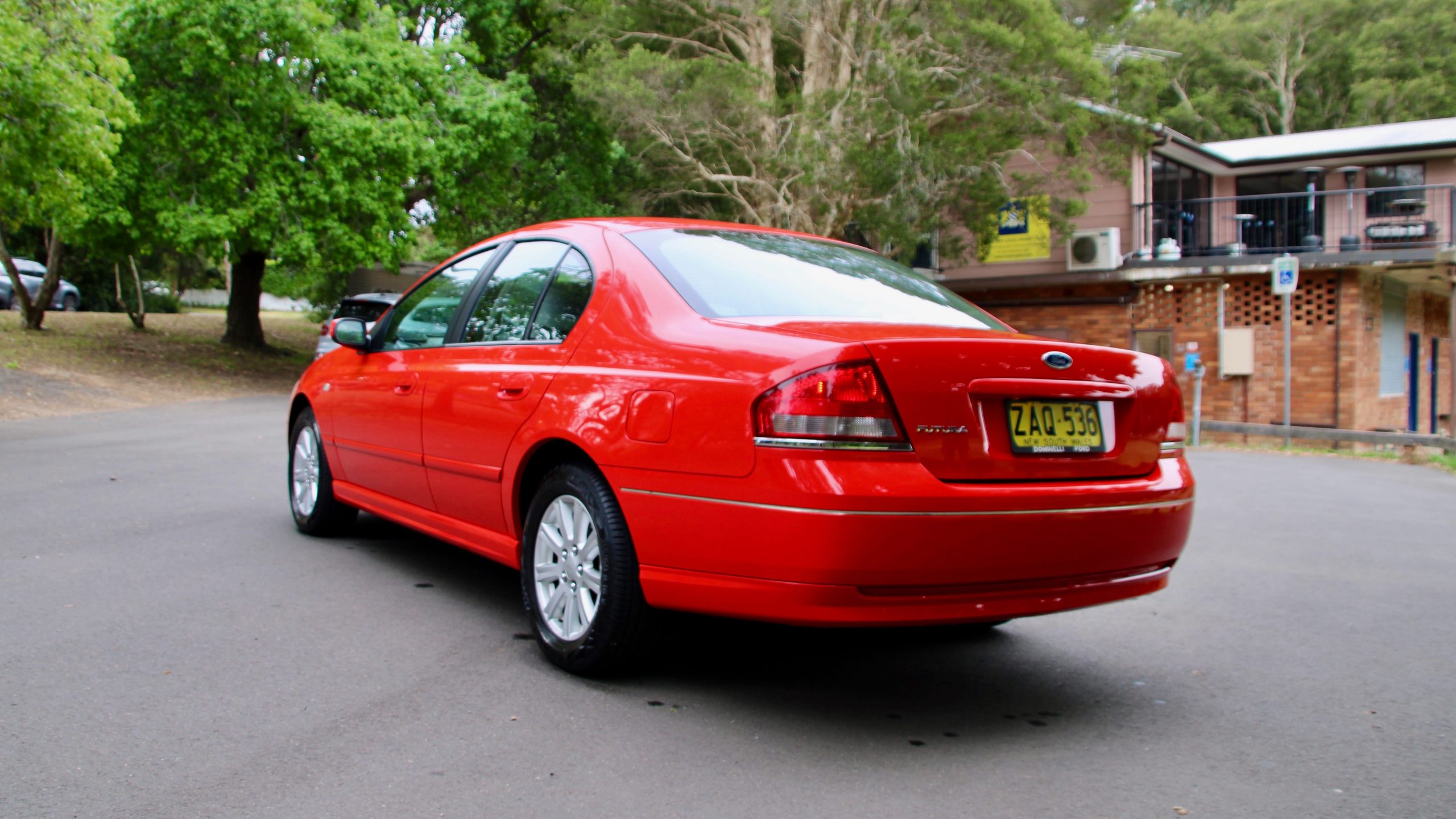

Price & Equipment:
As with most near 20-year-old cars condition can vary between examples but expect to pay between $3,000 and $8,000 for a BA Falcon Futura. Average kilometers can range from 100,000 to upwards of 300,000km.
Despite its age, the Futura actually got a nice amount of equipment. There is 16-inch alloy wheels, a CD player, four-speaker stereo, a driver and passenger airbag, remote central locking, cruise control, front and rear power windows with an automatic driver’s side window, intermittent wipers, a partially-electric driver’s seat, cloth upholstery, a trip computer, electric mirrors, steering wheel controls, independent rear suspension and anti-lock brakes.



When new, the 2003 Ford Falcon Futura sedan cost $38,015 plus on-road costs which was rather reasonable for the time. The competitors to the Futura were the VY Holden Commodore Acclaim, which was slightly cheaper at $37,890 and the Mitsubishi Magna Advance which was priced at $37,400.
Options available on the 2003 Ford Falcon Futura were $1,390 larger 17-inch alloy wheels, $330 sports suspension, a $360 limited slip differential, $2,250 electronic sunroof, $470 rear boot spoiler, $3,600 satellite navigation, $350 power adjustable pedals, $470 traction control, $500 side front airbags and a $600 premium sound system. Some of these options are quite rare to find these days.
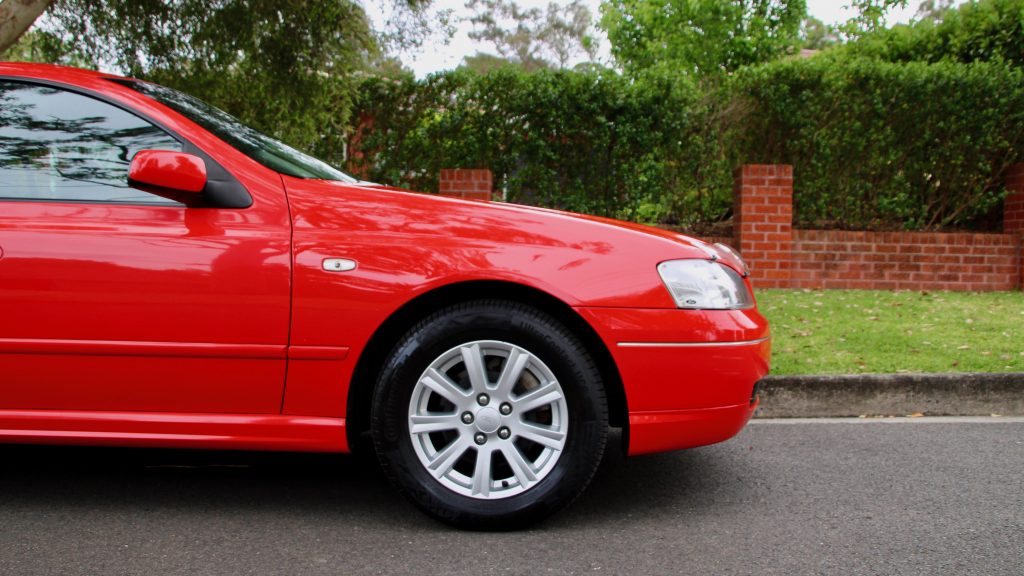
The BA falcon came in a large amount of colours. Our test car was painted in ‘Venom Red’ but also available was ‘Silhouette’ (black), ‘Blue Print’, ‘Blue Pearl’, ‘Narooma Blue’, ‘Acid Rush’ (yellow), ‘Offshore’ (blue), ‘Congo Green’, ‘Harvest Green’, ‘Luscious’ (maroon), ‘Blood Orange’, ‘Phantom’ (purple), ‘Barossa Red’, ‘Vixen’ (red), ‘Ice Mint Silver’, ‘Lightning Strike’, ‘Mercury Silver’, ‘Winter White’ and ‘Citric Acid’.
Performance & Economy:
The sole engine that powered the 2003 Ford Falcon Futura was an Australian made 4.0-litre straight six-cylinder named the ‘Barra’. In this guise it produced 182kW of power and 380Nm of torque, which was healthy for this class. The standard transmission available was a five-speed manual but our test car has the optional four-speed torque converter automatic. Also optional was a dual-fuel (LPG) conversion.
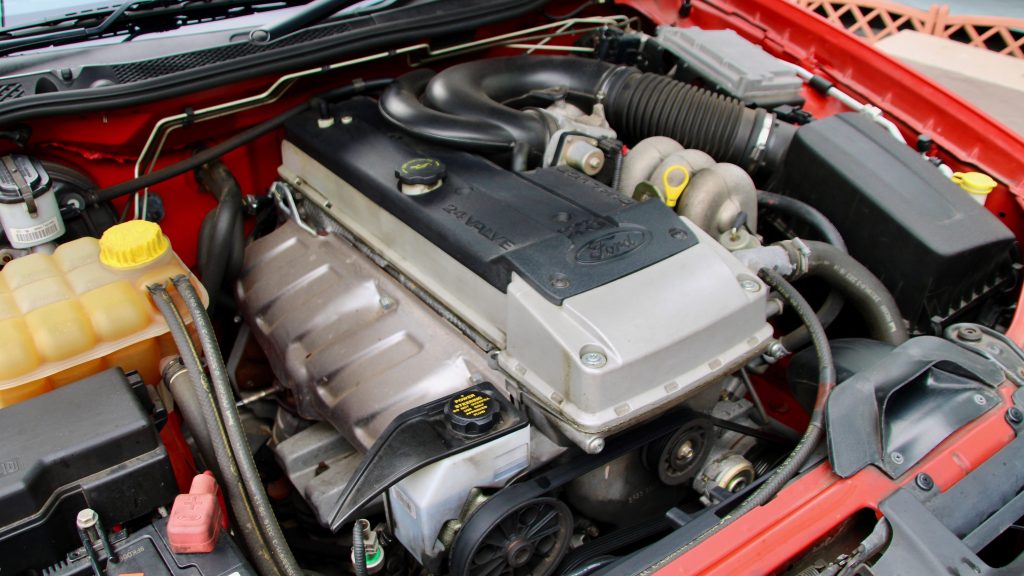
The engine is rather smooth and offers a great amount of power up high, the gears in the automatic are very long which means when booting it you may need to wait for the engine to get into its power band to get the most out of it. The automatic transmission shifts smoothly and is trouble free, there is also a tiptronic manual mode which lets you select gears yourself. Like all other Falcons, the BA is rear wheel drive.
The handling ability is relatively good for a non-sporty focused sedan. There is some body roll, which is to be expected but other than that, the handling ability is good. The ride is also rather good for a standard and rather simple suspension set up. More than comfortable enough to endure Australia’s ‘interesting’ roads.
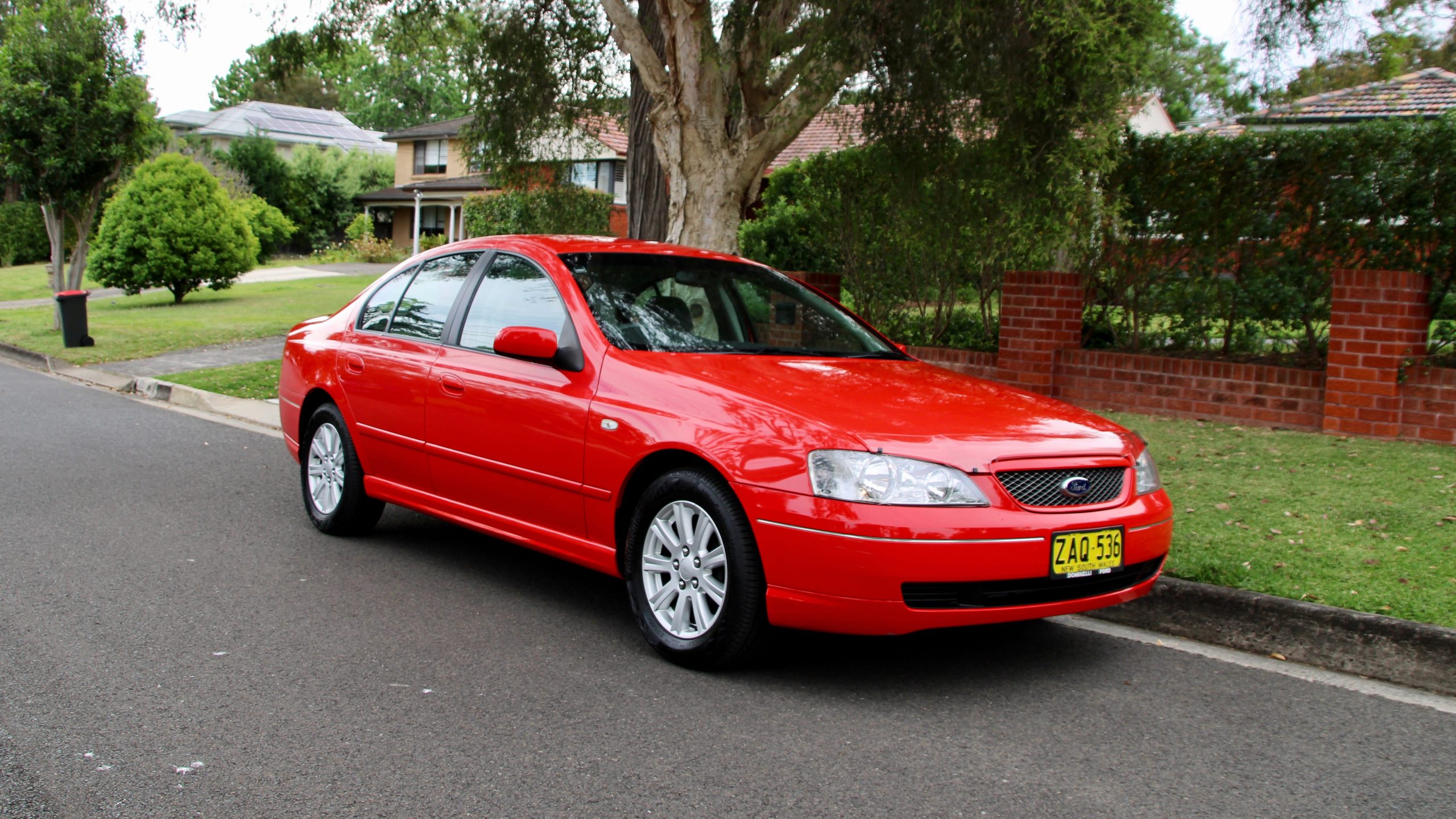


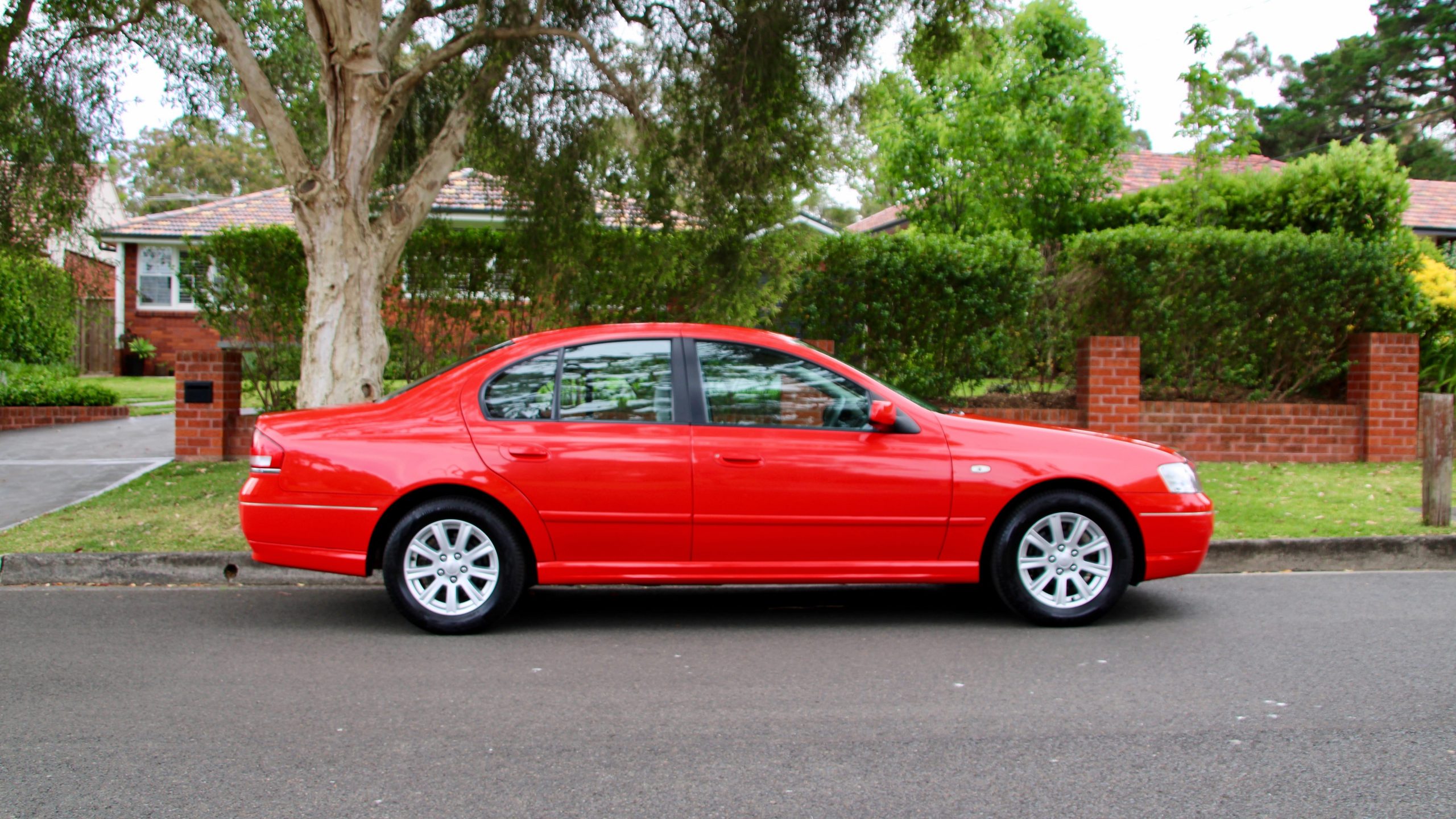
The BA Falcons aren’t really known for their fuel economy but on longer journeys and at speed they can do alright. The claimed average fuel consumption figure of the 2003 Ford Falcon Futura we have here is 11.5L/100km which is reasonable for a large six-cylinder sedan. It also has a 68-litre fuel tank and can run on 91RON fuel.
Other models of the BA falcon also came with a 5.4-litre V8 or a turbocharged version of the 4.0-litre ‘Barra’ six-cylinder engine.
Interior:
The interior of the 2003 Ford Falcon Futura, while functional, is rather simple. There is a conventional dashboard with well thought out dials and instruments. The quality of materials is nice and though there is a fair amount of hard plastic, it was built to last.

The interiors of these old Fords really have stood the test of time well, even rough examples don’t seem to have cracked dashes or trim pieces. The only slightly weak point of the interior are the seats which can wear with age and excessive use though this is common with any car of this age with cloth seats – so not really a fault of the Falcon.
Having such a cult following with the BA XR8 and XR6 Turbos, there are quite a few interchangeable and aftermarket parts available for the falcon such as head units, aftermarket gauges, seats and other items.
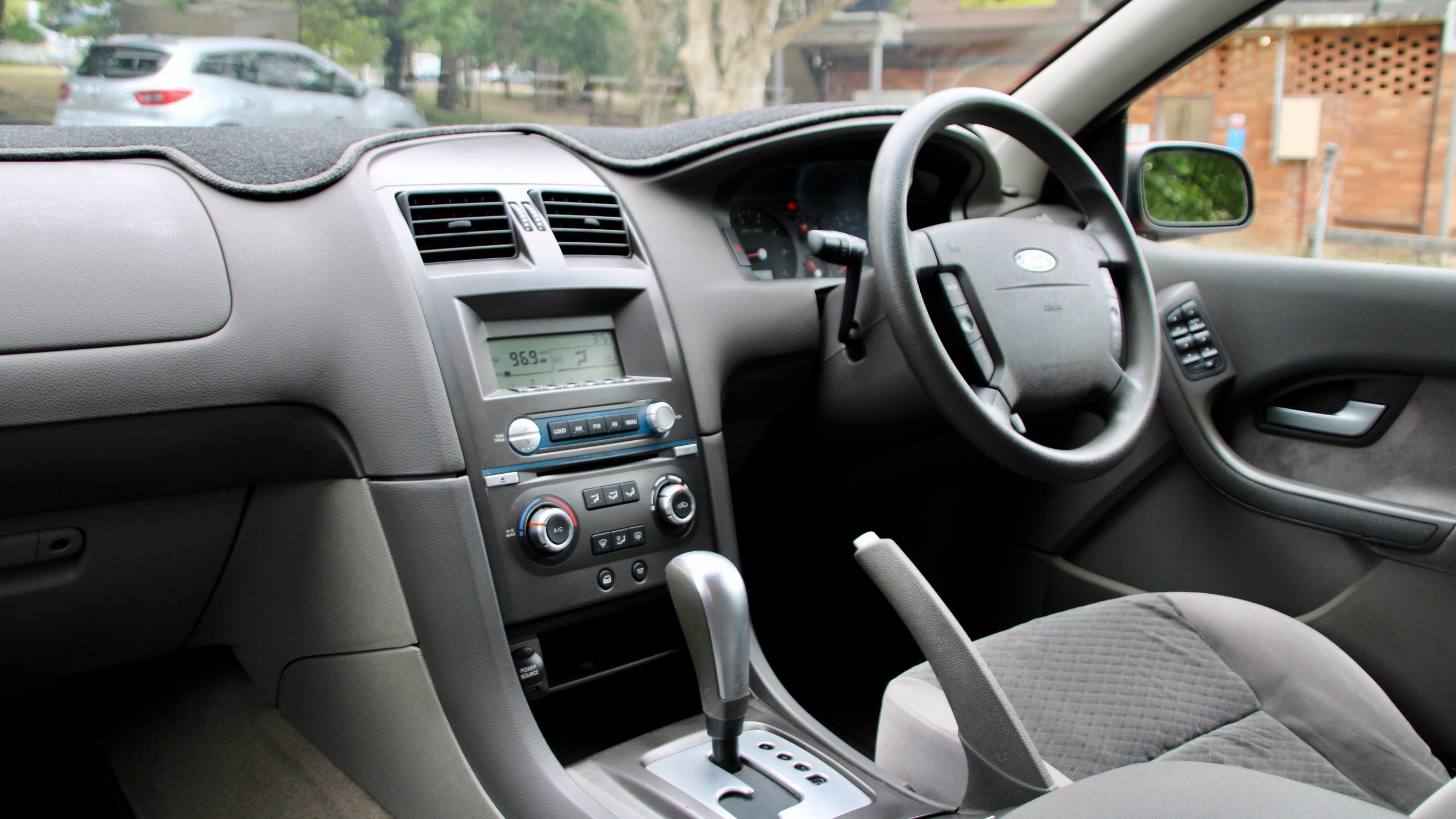

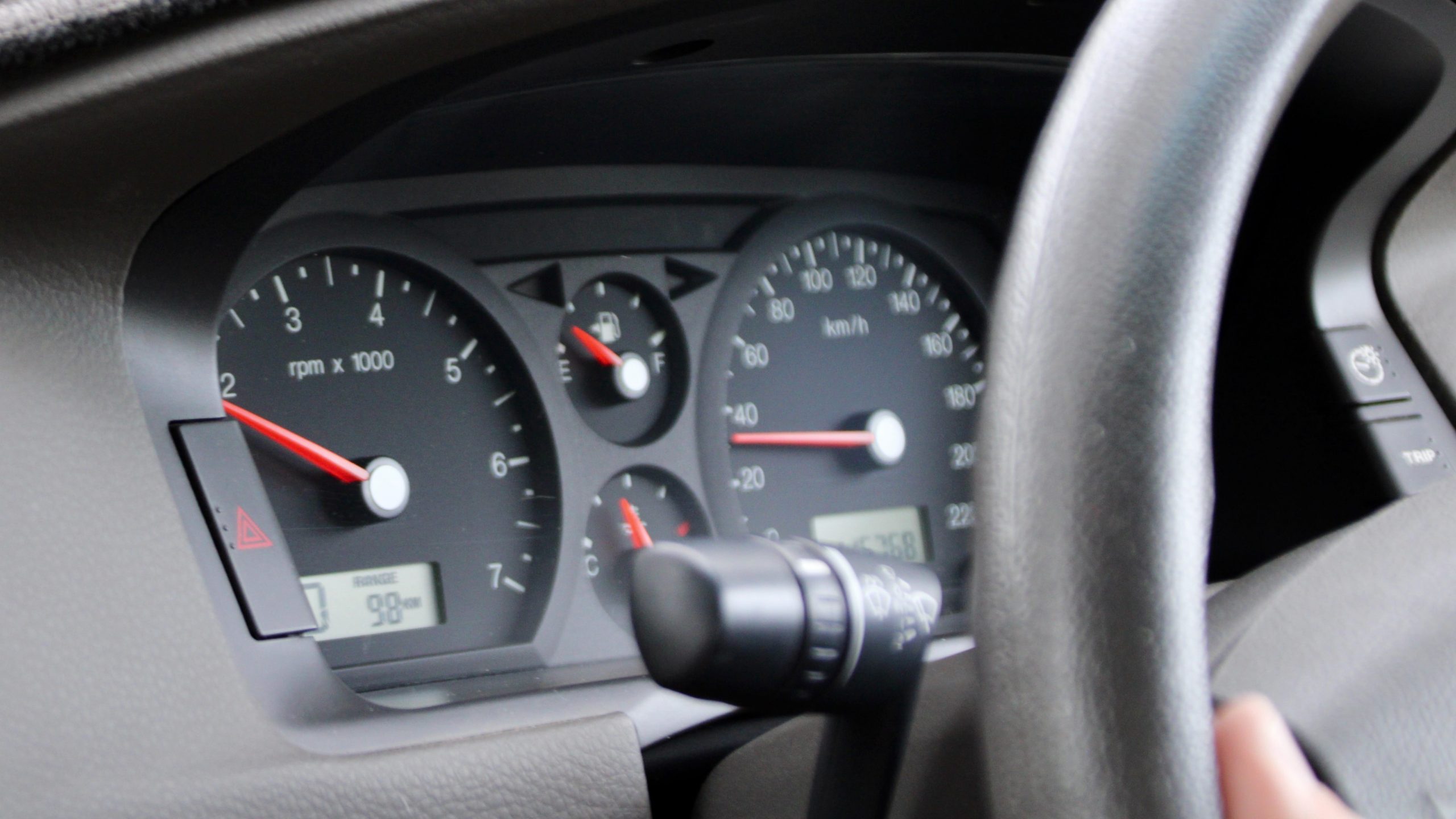

The rear seats and rear leg room in BA Falcons are enormous – no wonder they were used as taxis and police cars. There are rear air vents and the space on tap could even beat modern SUVs. Open the rear tailgate and you’ll find a large and accommodating boot which will easily fit a set of golf clubs or a few overnight bags. The rear sears also fold 60/40 split to load longer items.
Service & Reliability:
The 2003 Ford Falcon Futura and all other BA Falcons are known for their reliability, there are examples (likely ex hire cars or taxis) with hundreds of thousands of kilometers on them and are still running fine. In saying this there are a few items to look our for.
One of the more common issues in these Falcons are the rear differential bushings that seem to go bad. They are designed to hold the differential within the subframe and absorb any driveline vibrations. A telltale sign that these are going or have gone bad is a loud thump under acceleration. These are expensive to repair with the labour involved to replace them being extensive.
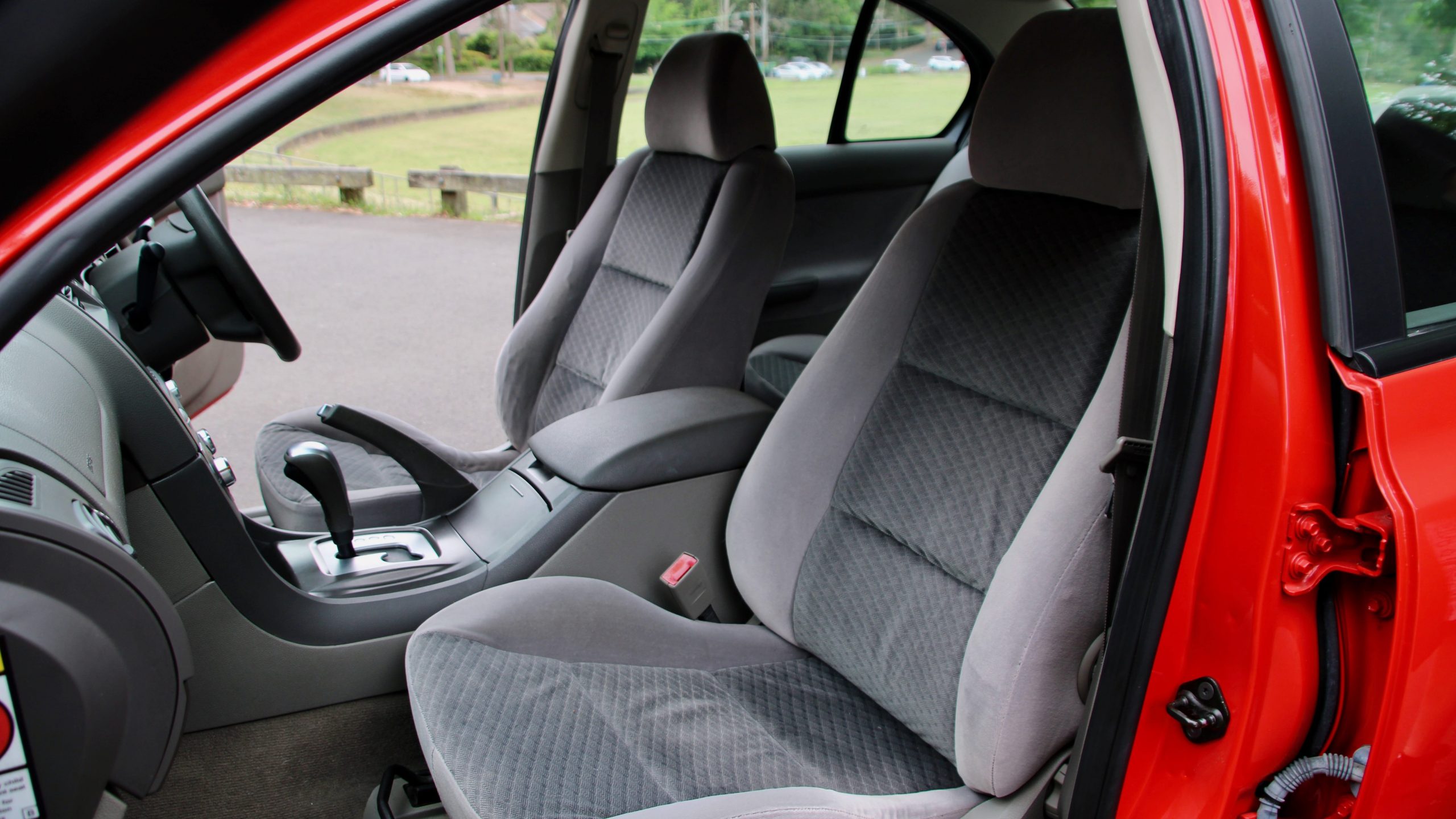

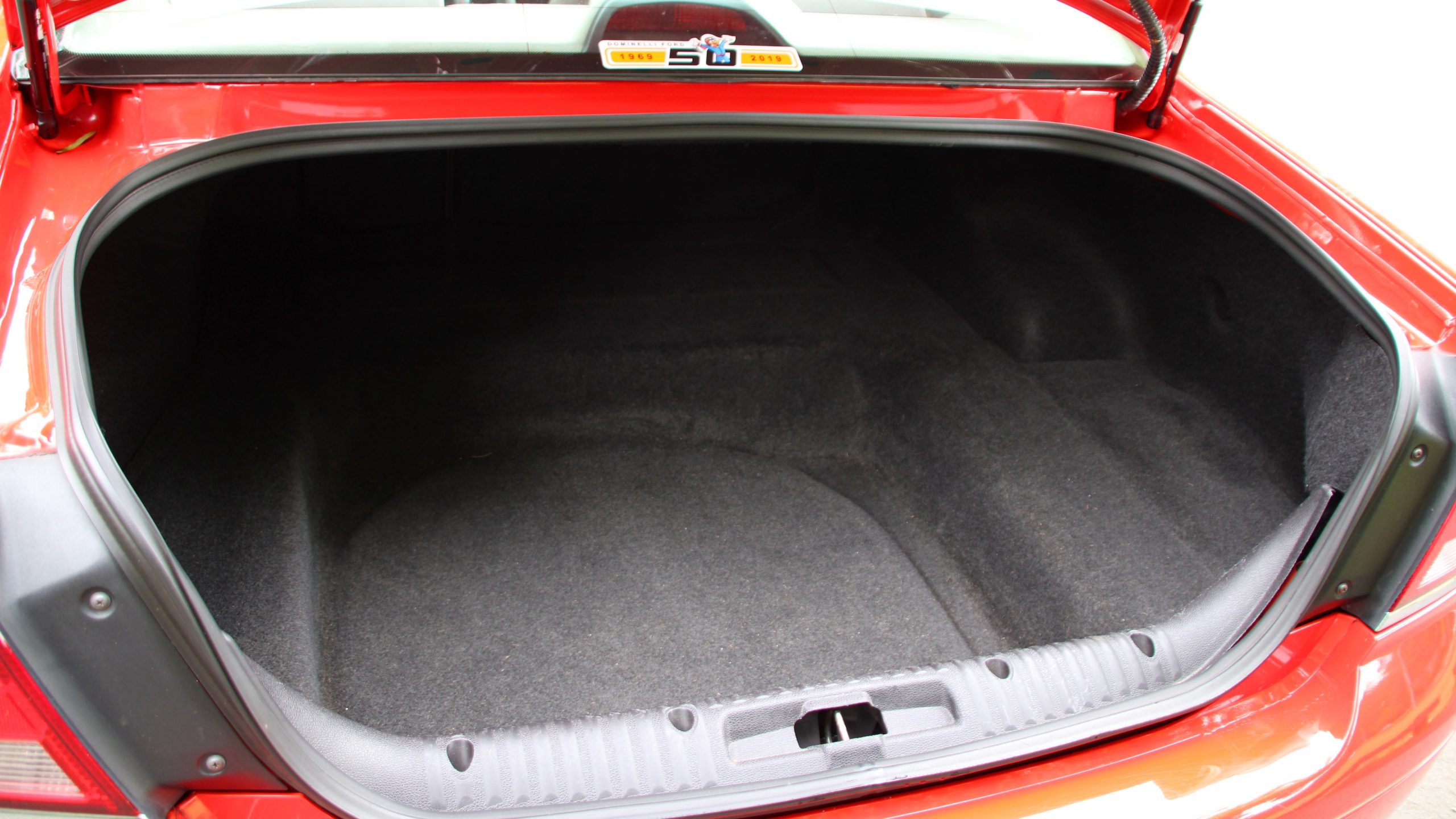

The power steering pump on these falcons is an item to look out for. The O-rings in the power steering pump get old and fail. A tell tail sign for this is the steering becomes very noisy and can sound like a whine. If left like this then fluid can leak out of the power steering pump and onto the alternator causing that to also fail.
The front lower control arm ball joints are also something to keep an eye on as they can wear out over time and make clunking noises when turning or going over bumps. The roof lining on most Falcons (especially earlier model ones) is a weak item that always seems to go bad. Replacing these is relatively simple but time consuming.

Servicing these BA Falcons is very simple and will cost only the price of the oil and filter if doing it yourself. Going to a mechanic or workshop will be more expensive but even they don’t charge much for servicing as it is relatively simple.
Conclusion:
So do we recommend buying a 2003 Ford Falcon or any other BA model Ford? Yes, they are cheap to maintain (though do have their little niggles as does any car), cheap to buy and parts are not expensive at all.
As far as pain free ownership goes the Ford Falcon is at the top of the list, they’re also comfortable and spacious being able to accommodate five passengers. Are they easy to find? Yes, Australia being one of the only markets the Falcon was sold means that they are/were quite popular.


An Aussie icon that was not just built here but also enjoyed by many and used in so many applications the BA Falcon is one of the most memorable Aussie cars of the 21st century.
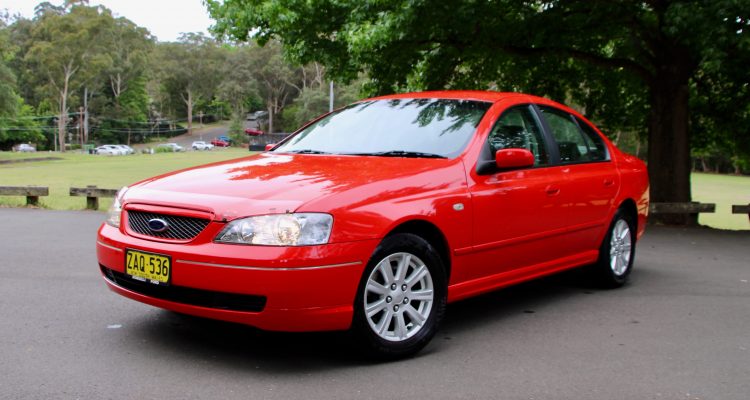
Leave a Reply